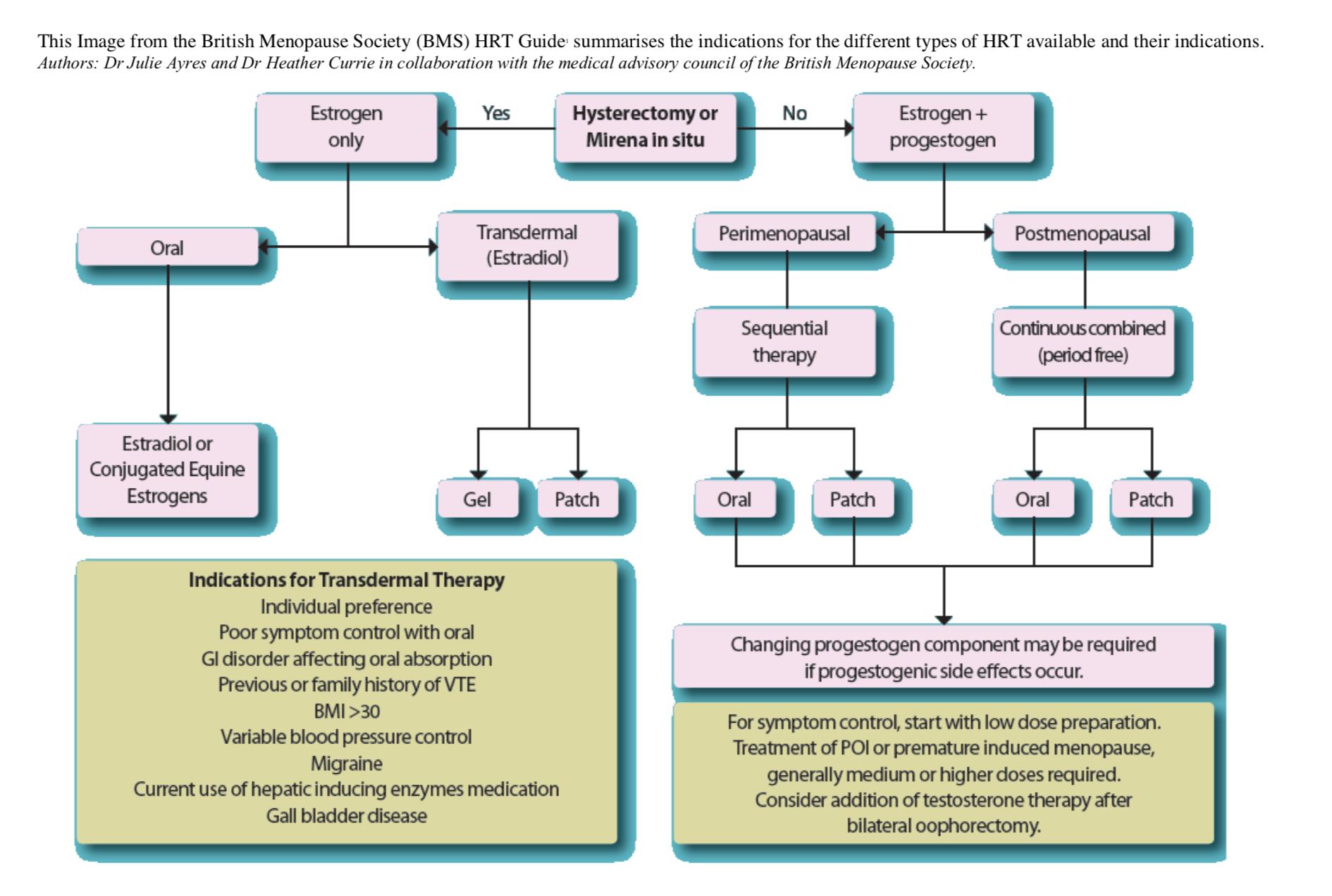Hormone replacement Therapy (HRT)
HRT has been a revelation in the management of menopause in middle-aged women.
The basic principle is to replace the oestrogen that falls during menopause to alleviate symptoms.
It controls menopausal symptoms and protects against osteoporosis.
Also may reduce the risk of colorectal cancer, type 2 diabetes and CHD/Alzheimer’s (if started early)
When prescribing HRT, the 2 most important things to consider is whether the patient has a uterus (hysterectomy) and whether they are peri-or-post menopausal.
HRT is divided into oestrogen only, or combined oestrogen with progesterone:

Side effects
Fluid retention
Nausea, dyspepsia, bloating
Breast tenderness
Headaches
Contraindications
Current or past breast cancer
Undiagnosed vaginal bleeding
Any oestrogen sensitive cancer
Untreated endometrial hyperplasia
Risks of HRT
Cancer – Increased risk of breast cancer and endometrial cancer (reduced by adding progestogen)
Thrombosis – Increased risk of DVT/PE (lesser risk with transdermal HRT)
Cardiovascular – Increased risk of CHD/stroke seen with combined HRT started in women >60yrs)
Oestrogen Only HRT – Oestradiol
This form of hormone replacement therapy provides a direct replacement for the fall in oestrogen levels
But, it can only be used in patients without a uterus, or a progesterone coil in situ due to the raised risk of endometrial cancer.
It is available in several different forms:
Vaginal Gel
This is a gel which can be applied over the vagina, used to prevent vaginal atrophy
It is the safest as no systemic absorption and so can be used in women with a uterus
Used in women with vaginal symptoms and no systemic menopausal symptoms
Oral tablet
These are tablets which are absorbed by the gut and enter the systemic circulation
They carry a higher risk of DVT/PE than transdermal methods
This means in certain types of people e.g. high BMI, VTE sufferer, they should not be used
Oestrogen only patch
A patch which releases oestrogen and is more effective than tablets.
Unlike the tablets, this does not increase the risk of VTE or stroke.
Indications for patch
BMI>30
Previous/family history of VTE
Variable BP control
Migraine
Poor symptom control with oral
Gallbladder disease
On medicines which alter liver enzymes
GI disorder affecting absorption
Combined HRT – Oestradiol + Progesterone (Norethisterone, levonogestrel)
This form of HRT involves both oestrogen for replacement + progesterone for protective purposes
It is needed in women who have a uterus, as progesterone provides protection against endometrial cancer
It is given via combination tablets, combination patches or separate oestrogen and progesterone tablets.
It can be given sequentially/cyclically or continuously:
Sequential
This is used for peri-menopausal women (those whose last period < 1 year ago)
In this type of therapy, women will still have a bleed every month or every 3 months:
Monthly HRT – take oestrogen every day and progestogen alongside it for the last 14 days of your menstrual cycle
3-monthly HRT – you take oestrogen every day, and take progestogen alongside it for around 14 days every 3 months
Continuous
This is used for post-menopausal women (those whose last period > 1 year ago)
It involves taking combined HRT (oestrogen and progestogen) every day without a break
Disclaimer




